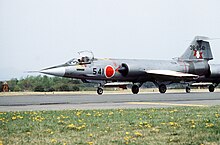Kawaii

Kawaii ( Japanese 可愛 い or か わ い い ) is originally the Japanese expression for “lovable”, “sweet”, “cute”, “childlike” or “attractive”. It now stands for an aesthetic concept that emphasizes innocence and childliness and has expanded to all areas of Japanese society. In Western languages, kawaii has established itself as the name of a Japanese-influenced cuteness aesthetic. According to the cultural scientist Kazuma Yamane , it has established itself as a whole discourse system.
Since the 1970s, cuteness, especially as a design element, has become an increasingly prominent aspect in many areas of Japanese life and culture . Originally this was especially popular with young girls: They used kawaii handwriting, made friends with kawaii characters in a kawaii room in order to end up as kawaii as possible themselves. From there, the trend spread across society. By the end of the 1980s it had also established itself as a discourse in Southeast Asia, and since the turn of the millennium also in Western countries.
Western observers in particular are unfamiliar with this, as the Japanese use cuteness in many situations where it would be viewed as unsuitably childish or dubious in Western cultures , such as in government publications, official warnings, office environments, advertising for the military or commercial airlines . The compulsion to abandon childlike behavior is less pronounced in Japan than in the West. The emphasis on extremely stylized mascots like Pikachu or Hello Kitty creates a projection surface that hardly gives any feedback. Unlike Disney characters, for example, the Japanese kawaii characters have hardly any facial expressions or facial expressions. In the case of Hello Kitty, this goes so far that the character no longer even has a mouth.
Occurrence

Elements of "kawaii" can be found almost anywhere in Japan , from large stores to small corner shops , from government to county councils. Adults also read cute comics in public transport without getting surprised looks, just as banks can give their customers plush pandas without being considered dubious. The Liberal Democratic Party successfully gave away dolls to its adult voters during the election campaign. Successful singers are far less sexy and erotic than in western countries and instead rely on a cute, childlike persona.
Many companies use cute mascots to showcase their goods and services. For example
- were the sites of three All Nippon Airways - passenger aircraft with Pikachu , a character from Pokémon , decorated
- Trains are with prints in the style of manga and anime decorated
- Asahi Bank uses Miffy , a character from a Dutch children's book series, on some of its bank cards
- can monchhichi , a cute monkey figure, on the packaging of a condom brand be found
- all 47 Japanese prefectures have a cute mascot figure
- is Yu-Pack , the mascot of Japan Post , a stylized mailbox
Cute items are popular in Japan. The two largest manufacturers of such goods are Sanrio (maker of Hello Kitty ) and San-X . Items of this type are popular among Japanese children and adults alike.
Since the 1990s, even the Japanese automobile industry follows the kawaii trend and provides for various small cars as paikuka called retro packages , which by round headlights and large grille of a face remember (for example, the Daihatsu Mira Gino or Subaru Vivio Bistro).
Kawaii can also be used to describe fashion tastes. This usually includes clothes that are too small, or clothes that show off the cuteness of the person wearing them or that look like they were made for children. Ruffles and pastel colors are also used very often, as well as toys as accessories or bags with cartoon characters .
Influence on other cultures
Kawaii items and other Kawaii products are popular in other parts of East Asia as well, such as the PRC , Taiwan, and Korea . The term kawaii is well known and is often used by non-Japanese-speaking fans of Japanese pop culture (for example, manga , anime, or J-pop ). It has recently appeared in western pop culture, for example in Gwen Stefani’s Harajuku Girls - music video . The kawaii metal music style is also popular in the west . A yami-kawaii style is also very popular in the West.
literature
- Sharon Kinsella: Cuties in Japan (PDF; 3.6 MB) . In: Brian Moeran, Lise Skov (Eds.): Women, Media and Consumption in Japan . Curzon / Hawaii University Press, 1995
- Donald Richie, Roy Garner: The image factory . fads and fashions in Japan. Reaction Books, 2003, ISBN 978-1-86189-153-2 , Kawaii - Kingdom of the cute, pp. 51-63 .
- Paolo Tumminelli: Car Design Asia, teNeues 2015, ISBN 978-3-8327-9538-2
Web links
Individual evidence
- ↑ a b c Beng-Huat Chua: Consumption in Asia. New rich in Asia p. 217 Routledge, 2000 ISBN 0-203-46756-6
- ↑ Richie, Garner p. 54
- ↑ Richie, Garner p. 60
- ↑ Richie, Garner p. 51
- ^ Anne Cooper-Chen, Miiko Kodama: Mass communication in Japan Wiley-Blackwell, 1997 ISBN 0-8138-2710-8 p. 92
- ↑ Decorated trains in Japan. In: Pink Tentacle. December 2, 2008, accessed December 8, 2008 (English, pictures of numerous trains with different decorations).
- ↑ Paolo Tumminelli: Car Design Asia, teNeues 2015, ISBN 978-3-8327-9538-2 , pp. 192f.
